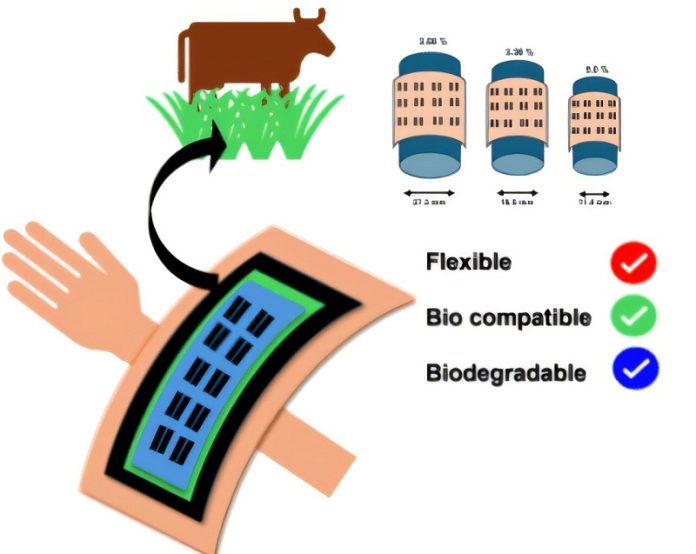
A team of Canadian scientists has created a new kind of wearable technology that’s not only flexible and safe for the human body but also environmentally friendly.
By combining collagen—the protein that makes up much of our skin—with semiconducting polymers, researchers have designed materials that could transform the future of smart devices, both for people and for nature.
The project was led by Dr. Simon Rondeau-Gagné, a chemistry professor at the University of Windsor, along with his collaborators and graduate students.
Using advanced imaging tools at the Canadian Light Source (CLS) facility in Saskatchewan, the team discovered that mixing collagen with a soft, stretchable polymer creates materials that are both high-performing and eco-conscious.
Collagen gives the material a skin-like feel—both firm and bendable—making it a great match for use directly on or inside the human body. The added polymer boosts the material’s stability for weeks at a time but also ensures it will eventually break down, helping to avoid long-term pollution like microplastics.
The team’s findings, published in the journal ACS Applied Materials & Interfaces, offer a solution to a growing challenge in electronics: how to make devices that are effective, wearable, and safe for the planet.
“We want the devices to work well while they’re needed, but also to naturally disappear when they’re no longer useful,” Rondeau-Gagné explained. “We’re thinking ahead about the environmental impact of the technology we’re building today.”
With this new material showing similar performance to current, non-biodegradable components, the door is now open for all sorts of future uses.
In the near term, for example, the stretchable device could be used on plants to track their growth.
As a leaf expands, the device would stretch with it and provide data about how the plant is responding to different conditions—useful for greenhouse monitoring or field-based agriculture.
This line of work is part of AGUWin, the Agriculture UWindsor Center of Excellence, which focuses on sustainable agricultural research and innovation.
Looking further ahead, Rondeau-Gagné sees potential for even more life-changing applications. One idea is a tiny patch that could be implanted in the eye of someone with vision loss. The patch might strengthen the signals between the eye and brain, potentially helping to restore some vision.
Turning these ideas into real-world tools will require teamwork across fields—from biology and engineering to agriculture and medicine. Rondeau-Gagné’s team plans to continue working with the CLS to better understand how their materials behave and interact, helping to shape a greener, smarter future for wearable technology.
Source: KSR.



